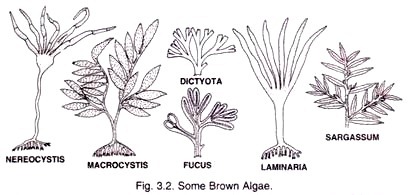Ever since the dawn of human civilization, biodiversity has been the backbone of human food, health and livelihood providing systems.
The importance of biodiversity is economic, environmental, scientific and medical. The Global Convention on biodiversity (CBD) was adopted at the UN Conference on Environment and Development in 1992.
The CBD officially came into force in December 1993 and by January 2000; over 170 nations had ratified the CBD, which is a unique international agreement for conservation and sustainable use of biodiversity.
The term “biodiversity” is a concise form of “Biological Diversity” and was coined by Walter G. Rosen in 1986 (Wilson, 1994). The definition of biodiversity, as provided in Article 2 of Convention on Biodiversity (CBD), is as follows. “Biological diversity means the variability among living organisms from all sources including, inter alia, terrestrial, marine and other ecosystems and the ecological complexes of which they are part; this includes diversity within species, between species and of ecosystems”.
Biodiversity is not just the numbers of organisms present in any natural ecosystem. Biodiversity as such is not a resource but a property of living systems. CBD is one of the main global attempts to set an agenda for maintaining biodiversity. According to Harvey B. Lilywhite (2002), the term refers to “the variety and variability among living organisms and the ecological complexes in which they occur”.
These days we find lot of focus and public concern for biodiversity. As example, the Academic Press has recently announced the publication of a five-volume ‘Encyclopedia of Biodiversity’ containing more than 300 separate articles and covering 20 different subject areas related to this topic. Numerous aspects of research in the field of “conservation biology” are related to issues of biodiversity and biological researches at community or ecosystem level are biodiversity dependent.
The subject also is important to many developments in biotechnology, for example the genetic engineering for control of exotic species. To illustrate the level of concern for biodiversity issues that has emerged internationally, the Organisation for Economic Cooperation recently approved plans for creating the world’s largest biodiversity databank. The Global Biodiversity Information Facility (GBIF) will contain not only a catalogue of all the known species, but will also include scores of databases related to molecular and genetic collections, geospatial information’s and natural history data (MacCabe, 1999).
During recent years our predominant approaches to understanding biodiversity related issues have come from the fields of ecology, population biology and genetics. However, we have ignored physiological approach to understand issues and paradigms related to biodiversity.
India is one of the 12 mega biodiversity countries in the world. The country is divided into 10 biogeography regions. The wide variety in physical features and climatic conditions have resulted in a diversity of ecological habitats like forests, grasslands, wetlands, coastal and marine ecosystems and deserts which harbour and sustain immense biodiversity. Biogeographically, India is situated at the tri-junction of three realms, Afro tropical, Indo-Malayan and Palaeo-Arctic, and therefore, makes the country rich and unique in biological diversity.
The country is also one of the 12 primary centres of origin of cultivated plants and domesticated animals. It is considered to be the homeland of 167 important plant species of cereals, millets, fruits, condiments, vegetables, pulses, fibre crops, and oilseeds and 114 breed domesticated animals. Endemism of Indian biodiversity is significant. About 4900 species of flowering plants are endemic to the country.
These are distributed over 141 genera belonging to 47 families. These are concentrated in the floristically rich areas of North-East India, Western Ghats, North-West Himalayas and the Andaman and Nicobar islands. These areas constitute 2 of the 18 hot spots identified in the world. It is estimated that 62% of the known amphibian species are endemic to India of which a majority is found in Western Ghats. Number and percentage of species of bacteria, fungi, plants and animals are shown in Table 7.1.
Distribution of Biodiversity:
Biodiversity is not uniformly distributed. Several theories have been proposed to explain uneven distribution of biodiversity. Some important theories are – Evolutionary time theory, climatic stability theory, spatial heterogeneity theory, and productivity theory. These theories attempt to explain that biodiversity depends on resource gradient; biodiversity is a function of frequency of disturbance and biodiversity is highest at intermediate level disturbance. Neighborhood recruitment limitations and herbivores and pathogens also play an important role in biodiversity distribution.
